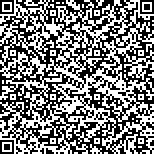| 引用本文: | 盛云华,胡玥,谷舒怡,航艾,严大为,郑赛晶,刘广超,唐黎明.1,2-丙二醇大鼠单次鼻暴露给药的血药浓度和组织分布研究[J].中国现代应用药学,2025,42(6):15-21. |
| shengyunhua,huyue,gushuyi,hangai,yandawei,zhengsaijing,liuguangchao,tangliming.Study on plasma concentration and tissue distribution of single nose-only exposure to 1,2-propylene glycol in rat[J].Chin J Mod Appl Pharm(中国现代应用药学),2025,42(6):15-21. |
|
| |
|
|
| 本文已被:浏览 49次 下载 26次 |

码上扫一扫! |
|
|
| 1,2-丙二醇大鼠单次鼻暴露给药的血药浓度和组织分布研究 |
|
盛云华1, 胡玥1, 谷舒怡1, 航艾1, 严大为2, 郑赛晶2, 刘广超2, 唐黎明1
|
|
1.上海市食品药品检验研究院;2.上海新型烟草制品研究院有限公司
|
|
| 摘要: |
| 目的 对大鼠单次鼻暴露1,2-丙二醇血药浓度及组织分布进行研究,为其在鼻用制剂中作为药用辅料的安全应用提供参考。方法 取Wistar大鼠,♀♂各半,分3组,各组大鼠鼻暴露1,2-丙二醇,剂量分别为100、500、1500 mg?kg-1(1,2-丙二醇气溶胶目标浓度29.8 mg?L -1,暴露时间分别为6 min,26 min,77 min),各组各取6只大鼠(♀♂各半)于不同时间点采血检测血浆1,2-丙二醇浓度,各组各取24只大鼠(♀♂各半)于不同时间点取组织检测1,2-丙二醇浓度。结果 大鼠单次鼻暴露1,2-丙二醇,不同剂量组血浆中1,2-丙二醇浓度迅速升高,达峰时间为给药结束至给药结束后30 min,低剂量组在给药结束后240 min 1,2-丙二醇均已大部分代谢,中、高剂量组给药后480 min 1,2-丙二醇均已大部分代谢,给药结束后1440 min,基本所有大鼠体内1,2-丙二醇均已代谢,AUC(0-t)随给药剂量增大而增加。组织中1,2-丙二醇达峰时间为给药结束,1,2-丙二醇在肾组织中的浓度略高于肺,肺略高于肝。结论 大鼠鼻暴露1,2-丙二醇吸收快,给药结束至给药结束后30 min达峰,之后进入消除相,代谢快,肾组织中的浓度略高于肺,肺略高于肝,为作为鼻用制剂辅料应用的安全性提供了试验参考。 |
| 关键词: 1,2-丙二醇 鼻暴露 血药浓度 组织分布 |
| DOI: |
| 分类号: |
| 基金项目: |
|
| Study on plasma concentration and tissue distribution of single nose-only exposure to 1,2-propylene glycol in rat |
|
shengyunhua1, huyue1, gushuyi1, hangai1, yandawei2, zhengsaijing2, liuguangchao2, tangliming1
|
|
1.Shanghai Institute of Food and Drug Control;2.Shanghai New Tobacco Product Research Institute Co., Ltd.
|
| Abstract: |
| OBJECTIVE To study the plasma concentration and tissue distribution of 1,2-propylene glycol (short for PG) by single nose-only exposure in rats, and to provide a reference for its safe application as an excipient in nasal drug delivery formulations. METHODS Wistar rats were divided into 3 groups with male and female equally. PG was inhaled at doses of 100, 500 and 1500 mg?kg-1 (target concentration of PG aerosol was 29.8 mg?L-1, and the exposure times were 6 min, 26 min and 77 min, respectively). Plasma concentrations of PG were measured by blood sampling from 6 rats (half of each sex) in each group at different time points, and tissue concentrations of PG were measured by tissue sampling from 24 rats (half of each sex) in each group at different time points. RESULTS The plasma concentration of PG increased rapidly in different dose groups after adminstration, with the peak time from the end of the administration to 30 min after the end of the administration. PG was mostly metabolized at 240 min after the end of the administration in the low dose group, and was mostly metabolized at 480 min in the medium and high dose groups. PG was metabolized in almost all rats 1440 min after the end of the administration. The AUC(0-t) increased with increasing dose. The peak time in tissues was the end of administration. PG concentrations were slightly higher in the kidney than in the lung, and slightly higher in the lung than in the liver. CONCLUSION PG was rapidly absorbed by nose-only exposure in rats with peak time from the end of administration to 30 min after the end of administration, and was rapidly metabolized. The concentration of PG in tissues were slightly higher in the kidney than in the lung, and slightly higher in the lung than in the liver, which provides an experimental reference for the safety of the application of PG as an excipient in nasal drug delivery formulations. |
| Key words: 1,2-propylene glycol single nose-only exposure plasma concentration tissue distribution |
|
|
|
|
